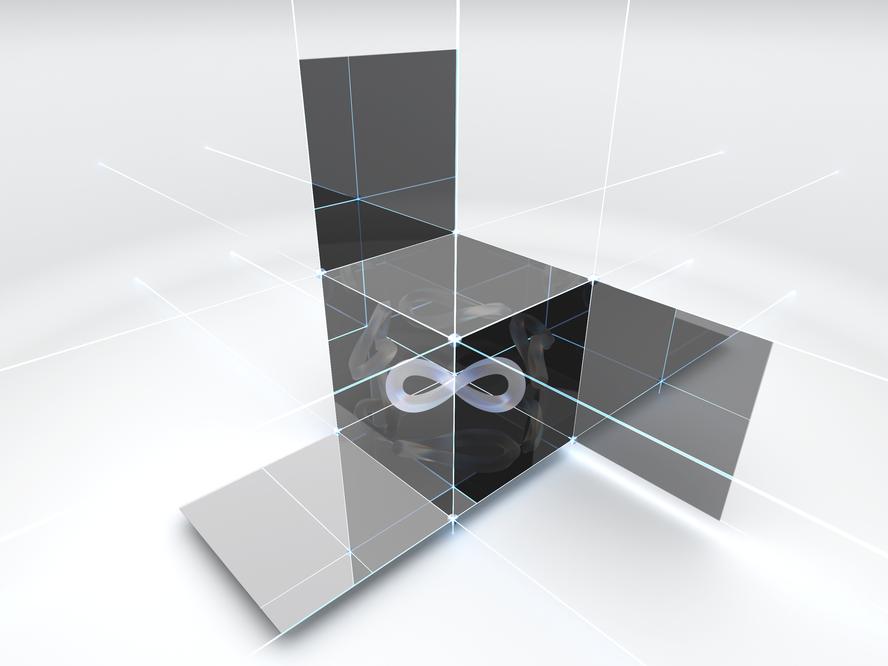Topology for every electronic band
For the past century, students of chemistry, materials science, and physics have been taught to model solid-state materials by considering their chemical composition, the number and location of their electrons, and lastly, the role of more complicated interactions. However, an international team of scientists has recently discovered 1 that an additional ingredient must also be equally considered – the notion of topology for every electronic band.

First codified in the 1980s by Michael Berry, Joshua Zak, and S. Pancharatnam, band topology is a physical property of some materials distinguished by unusually robust states, making the electronic properties of their exposed surfaces and edges insensitive to local perturbation. Topological phases of matter in 3D materials were first discovered 15 years ago by researchers including Andrei Bernevig, a member of the research team. Topological materials have been proposed as venues for observing and engineering exotic effects, including the interconversion of electrical current and electron spin, the tabletop simulating exotic theories from high-energy physics, and even, under the right conditions, the storage and manipulation of quantum information. Though a handful of topological materials have been uncovered through chemical intuition, topological electronic states in solid-state materials were generally considered to be rare and esoteric.
However, using high-throughput computational modeling, the team discovered that over half of the known 3D materials in nature are topological. As reported today in Science, the team performed complete high-throughput first-principles calculations searching for topological states throughout the electronic structures of all the 96,196 recorded crystals in the Inorganic Crystal Structural Database, an established international repository for reporting experimentally studied materials. As stressed by Nicolas Regnault, from Princeton University and the Ecole Normale Supérieure Paris, CNRS, “this was a daunting task that took more than 25 million hours of computing time.”
Through a combined chemical and topological analysis, the team grouped the electronic structures into roughly 38,000 unique materials. The team’s data have been made freely available through a massive overhaul of the publicly accessible Topological Materials Database, representing a culmination of the team’s efforts over the past 6 years developing the modern position-space theory of band topology known as “Topological Quantum Chemistry.”
The team also surprisingly discovered that almost all materials – nearly 90% – host topological electronic states away from their intrinsic numbers of electrons, known as the Fermi level. Even though these states lie dormant in many experimental probes, they are still straightforwardly accessible through techniques including chemical doping, electrostatic gating, hydrostatic pressure, and photoexcitation spectroscopy.
Supertopological materials
Perhaps even more surprising than finding topological properties in almost every material, was the discovery of some extreme cases of topology across the entire energy spectrum. “Looking at our data, we amazingly saw materials with topological properties everywhere!,” recalls Maia Garcia-Vergniory from the Donostia International Physics Center (DIPC) and the Max Planck Institute for Chemical Physics of Solids. The team found that 2% of known materials are “supertopological,” in that every electronic band above the tightly-bound core electrons was topological. Among the materials with overlooked supertopology was bismuth, one of the most historically well-studied solid-state materials. “Our results indicate that topology is a fundamental property of matter thus far overlooked,” concluded García-Vergniory.
The ubiquity of topological features observed in numerical simulations lead to a natural question: if the results were to be believed, experimental signatures of topological states should have already been observed in earlier investigations of many materials. Combing through data from earlier photoemission experiments, the team indeed discovered this to be the case. For example, in experimental studies of Bi2Mg3 performed 4 years ago, the authors observed unexplained “surface resonances,” which were recognized in the current study to be overlooked topological surface states away from the Fermi level. “The evidence had always been there. We now have a concrete key towards decoding all the surface features in spectroscopic material experiments,” noted Benjamin Wieder, a postdoctoral researcher at MIT. “Our database is such a powerful and convenient tool,” added Claudia Felser from the Max Planck Institute for Chemical Physics of Solids. “If I am interested in a topological property, the database instantly tells me the best candidates. Then I just grow the samples in my lab, no more guesswork,” explains Felser.
“Revisiting previous experiments with a new perspective is an amazing first step,” says Andrei Bernevig from Princeton University and an Ikerbasque visiting professor at the Donostia International Physics Center (DIPC). “But we can look to an even more exciting future, in which materials with advanced functionality are designed through a marriage of human intuition and artificial intelligence, built on the foundation of the Topological Materials Database and Topological Quantum Chemistry,” concludes Bernevig.
References
- M. G. Vergniory, B. J. Wieder, L. Elcoro, S. S. P. Parkin, C. Felser, B. A. Bernevig, and N. Regnault (2022) All topological bands of all nonmagnetic stoichiometric materials Science doi: 10.1126/science.abg9094 ↩